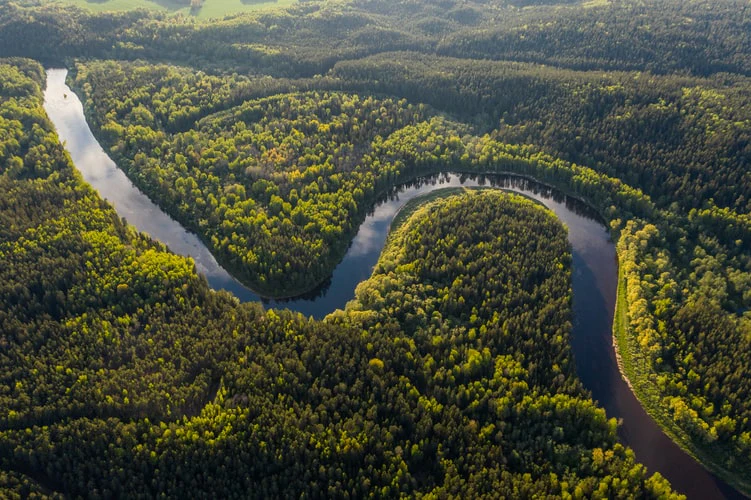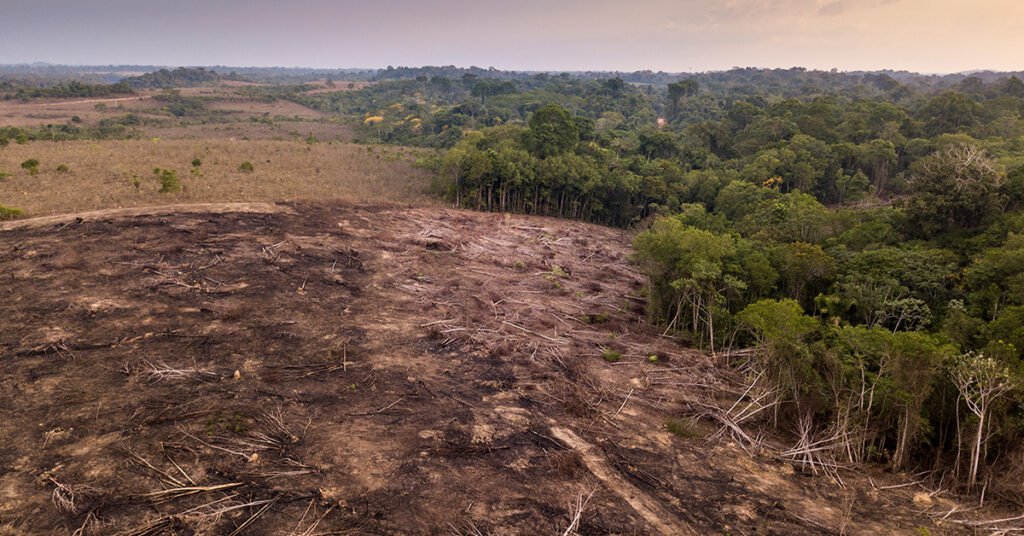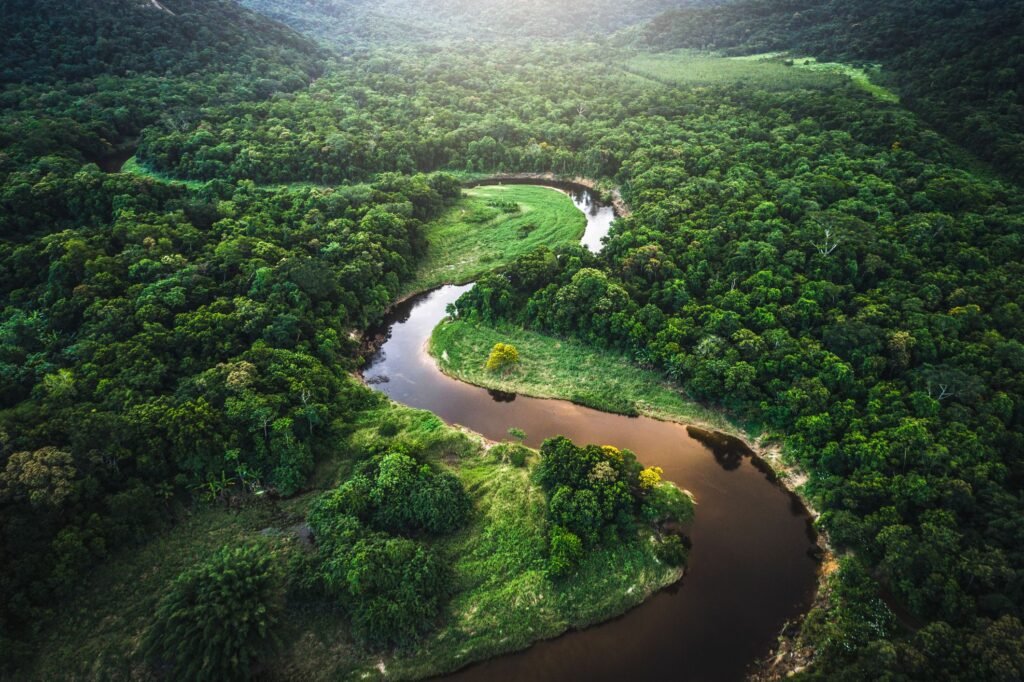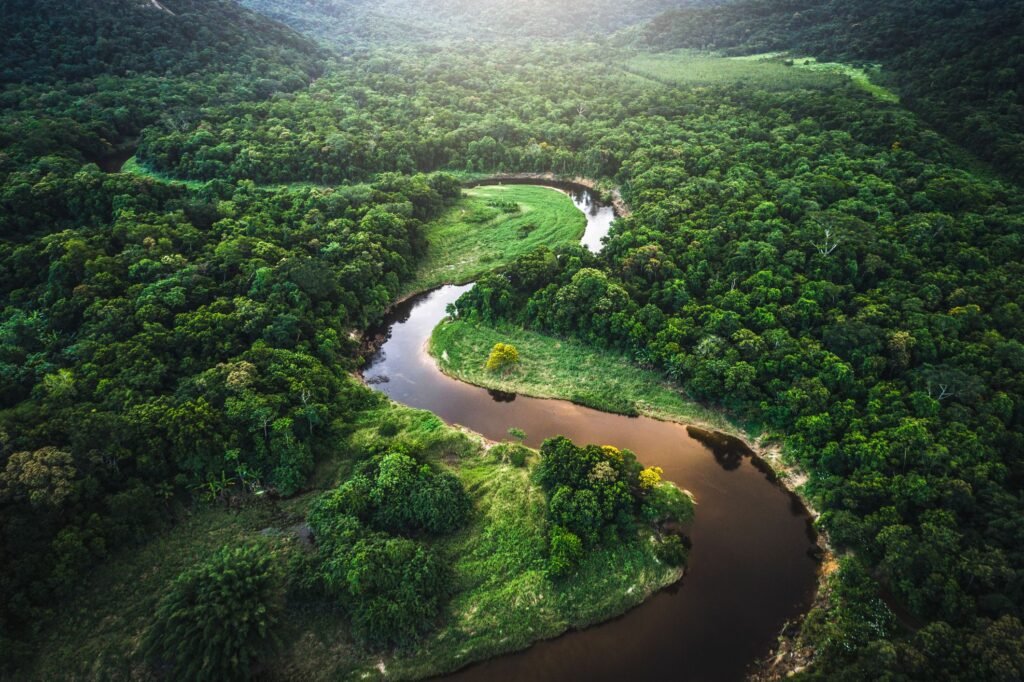
When you stroll through a vibrant forest or gaze upon a majestic landscape, you feel a connection to nature’s life force. But have you ever wondered why the Amazon Rainforest is often termed “the lungs of our planet”? This isn’t just poetic language—it’s a reminder of the critical role it plays in our global ecosystem. Today, we’ll explore why the Amazon is so unique, what might happen if it were to vanish, and what the world is doing to keep it safe.
The Role of the Amazon in the World
Spanning millions of square kilometers, the Amazon Rainforest is nature’s powerhouse. It produces vast quantities of oxygen through photosynthesis and serves as an enormous carbon sink, absorbing carbon dioxide and mitigating climate change. Moreover, the forest fuels intricate water cycles by releasing water vapor that forms rainy weather patterns far beyond its borders. Its unparalleled biodiversity—home to countless species of plants, animals, and indigenous cultures—helps maintain ecological balance. While any forest is important, the sheer scale and complexity of the Amazon make it exceptionally vital. It is called “the lungs of the Earth” not because it literally breathes for the planet, but because its ability to maintain atmospheric and climatic equilibrium is fundamental to life as we know it.

What Happens If the Amazon Disappears?
Imagine a world without one of its most precious ecosystems. The disappearance of the Amazon would cause dramatic shifts in global climate patterns. Without its natural role in absorbing carbon dioxide, greenhouse gas levels would surge, intensifying global warming. Local weather patterns would be disrupted, leading to extended droughts, unpredictable rainfall, and severe storms. Biodiversity hotspots would be lost, taking with them species that have yet to be studied or even discovered. The collapse of local communities who depend on the forest for their livelihood would also send ripples across the globe. In short, the disappearance of the Amazon would not just mean the loss of trees—it would represent a fundamental shift in Earth’s life support system.
Could the Amazon Disappear in 10 Years?
Recent studies and alarming deforestation statistics have raised serious concerns about the future of the Amazon. Some worst-case scenarios suggest that if current deforestation rates continue unchecked, significant portions of the rainforest could be irreversibly altered within a decade. While the complete disappearance of the entire forest is unlikely in such a short span, the loss of vast, critical areas—especially in regions already under intense pressure—remains a very real risk. This possibility should ignite a sense of urgency among all global citizens, particularly students and young nature lovers who will inherit the consequences of environmental decisions made today.
What Is the World Doing to Protect the Amazon?
The struggle to save the Amazon is a true global effort—a collaborative frontier merging the passions of governments, private institutions, NGOs, and local communities. Here’s how:
Government Initiatives: Countries within the Amazon basin, notably Brazil, have implemented policies aimed at curbing deforestation through enhanced monitoring, legal protection of indigenous territories, and enforcement actions against illegal logging. International agreements and environmental summits further pressure nations to adopt sustainable practices.
International Organizations: Institutions such as the World Bank and the United Nations have launched programs like the Amazon Sustainable Landscapes Program to provide financial support, technical resources, and policy frameworks that link conservation efforts with economic development. Their work is key to bridging the gap between environmental protection and sustainable livelihoods.
- Environmental NGOs and Private Groups: Entities like Rainforest Foundation US, Amazon Watch, and various community-based organizations play a frontline role in preserving the forest. These groups collaborate on research, community outreach, reforestation projects, and legal battles to safeguard this irreplaceable resource. Their work demonstrates how grassroots action can influence broader policies and foster global awareness.
Together, these initiatives form a multi-tiered defense against the forces driving the Amazon toward a tipping point. Their combined efforts underscore that while the forest’s survival is endangered, there is hope if we act collectively and decisively.

Why the Amazon is Uniquely Called the “Lungs of the Earth”
At first glance, any large forest could be seen as Earth’s lungs. However, the Amazon stands apart due to its vast size, unparalleled biodiversity, and the intricacy of its ecosystems. Its vast network of trees and plants not only produces oxygen but also plays a critical role in regulating climate and sustaining water cycles on a global scale. This ecological superpower is what truly earns it the title. While every forest contributes to our planet’s health, the Amazon’s sheer magnitude and complex interplay with climate systems make its loss far more consequential than that of smaller woodland areas.
Today
hey copilot i want a blog targetting all the students who should aware of nature,nature lovers, plant lovers, and animal lovers by using following pointers:Intro-duction the role of amazon forest in the world What happened if amazon rainforest disappears is it possible that amazon rainforest could disappear in 10 years? What is world doing to protect the forest? (Mention all the role of all institution weather they are government or private) the main purpose of the blog is Amazon rainforets the importance of it and the main idea is why we called amazon rain forest the lubgs of the earth which could be any forest but why only amazon rain forest add a conclussion and possible follow up links for the readers too.
Below is a rich, engaging blog post that addresses your pointers and is tailored for students, nature lovers, plant enthusiasts, and animal lovers:
Amazon Rainforest: The Lungs of Our Planet—A Call to Protect Our Natural Heritage
When you stroll through a vibrant forest or gaze upon a majestic landscape, you feel a connection to nature’s life force. But have you ever wondered why the Amazon Rainforest is often termed “the lungs of our planet”? This isn’t just poetic language—it’s a reminder of the critical role it plays in our global ecosystem. Today, we’ll explore why the Amazon is so unique, what might happen if it were to vanish, and what the world is doing to keep it safe.
The Role of the Amazon in the World
Spanning millions of square kilometers, the Amazon Rainforest is nature’s powerhouse. It produces vast quantities of oxygen through photosynthesis and serves as an enormous carbon sink, absorbing carbon dioxide and mitigating climate change. Moreover, the forest fuels intricate water cycles by releasing water vapor that forms rainy weather patterns far beyond its borders. Its unparalleled biodiversity—home to countless species of plants, animals, and indigenous cultures—helps maintain ecological balance. While any forest is important, the sheer scale and complexity of the Amazon make it exceptionally vital. It is called “the lungs of the Earth” not because it literally breathes for the planet, but because its ability to maintain atmospheric and climatic equilibrium is fundamental to life as we know it.
What Happens If the Amazon Disappears?
Imagine a world without one of its most precious ecosystems. The disappearance of the Amazon would cause dramatic shifts in global climate patterns. Without its natural role in absorbing carbon dioxide, greenhouse gas levels would surge, intensifying global warming. Local weather patterns would be disrupted, leading to extended droughts, unpredictable rainfall, and severe storms. Biodiversity hotspots would be lost, taking with them species that have yet to be studied or even discovered. The collapse of local communities who depend on the forest for their livelihood would also send ripples across the globe. In short, the disappearance of the Amazon would not just mean the loss of trees—it would represent a fundamental shift in Earth’s life support system.
Could the Amazon Disappear in 10 Years?
Recent studies and alarming deforestation statistics have raised serious concerns about the future of the Amazon. Some worst-case scenarios suggest that if current deforestation rates continue unchecked, significant portions of the rainforest could be irreversibly altered within a decade. While the complete disappearance of the entire forest is unlikely in such a short span, the loss of vast, critical areas—especially in regions already under intense pressure—remains a very real risk. This possibility should ignite a sense of urgency among all global citizens, particularly students and young nature lovers who will inherit the consequences of environmental decisions made today.
What Is the World Doing to Protect the Amazon?
The struggle to save the Amazon is a true global effort—a collaborative frontier merging the passions of governments, private institutions, NGOs, and local communities. Here’s how:
- Government Initiatives: Countries within the Amazon basin, notably Brazil, have implemented policies aimed at curbing deforestation through enhanced monitoring, legal protection of indigenous territories, and enforcement actions against illegal logging. International agreements and environmental summits further pressure nations to adopt sustainable practices.
- International Organizations: Institutions such as the World Bank and the United Nations have launched programs like the Amazon Sustainable Landscapes Program to provide financial support, technical resources, and policy frameworks that link conservation efforts with economic development. Their work is key to bridging the gap between environmental protection and sustainable livelihoods.
- Environmental NGOs and Private Groups: Entities like Rainforest Foundation US, Amazon Watch, and various community-based organizations play a frontline role in preserving the forest. These groups collaborate on research, community outreach, reforestation projects, and legal battles to safeguard this irreplaceable resource. Their work demonstrates how grassroots action can influence broader policies and foster global awareness.
Together, these initiatives form a multi-tiered defense against the forces driving the Amazon toward a tipping point. Their combined efforts underscore that while the forest’s survival is endangered, there is hope if we act collectively and decisively.
Why the Amazon is Uniquely Called the “Lungs of the Earth”

At first glance, any large forest could be seen as Earth’s lungs. However, the Amazon stands apart due to its vast size, unparalleled biodiversity, and the intricacy of its ecosystems. Its vast network of trees and plants not only produces oxygen but also plays a critical role in regulating climate and sustaining water cycles on a global scale. This ecological superpower is what truly earns it the title. While every forest contributes to our planet’s health, the Amazon’s sheer magnitude and complex interplay with climate systems make its loss far more consequential than that of smaller woodland areas.
Conclusion: A Shared Responsibility
The Amazon Rainforest is more than just a collection of trees—it is a living, breathing repository of life that sustains our planet’s climate, water, and biodiversity. For students, nature enthusiasts, plant lovers, and animal advocates alike, understanding and protecting the Amazon is a moral imperative. As we face the reality of potentially losing this irreplaceable treasure within our lifetimes, it becomes crucial to support sustainable practices, advocate for stronger policies, and invest in environmental education. The fate of the Amazon is a collective responsibility, and each one of us can help ensure that its legacy endures for generations to come.
Further Reading & Resources:
- World Bank’s Amazon Sustainable Landscapes Program
- Rainforest Foundation US – Protecting the Amazon
- Amazon Watch – Advocacy and Action
- Global Citizen’s Initiatives on Amazon Conservation
Delve into these resources to learn more about innovative solutions, global strategies, and local initiatives that can help preserve this vital ecosystem. Let’s continue the conversation and work together to keep our planet’s lungs healthy and thriving.
🔗 Trusted Sources to Link To:
1. NASA – Amazon Rainforest’s Role in Climate
🔗 https://climate.nasa.gov/news/2865
→ Talks about Amazon’s impact on Earth’s atmosphere and carbon storage
2. World Wildlife Fund (WWF) – Amazon Rainforest
🔗 https://www.worldwildlife.org/places/amazon
→ Covers biodiversity, conservation, and threats to the Amazon.
3. National Geographic – The Amazon, Explained
🔗 https://www.nationalgeographic.com/environment/article/amazon-rain-forest
→ In-depth overview of the rainforest’s importance.

Leave a Reply